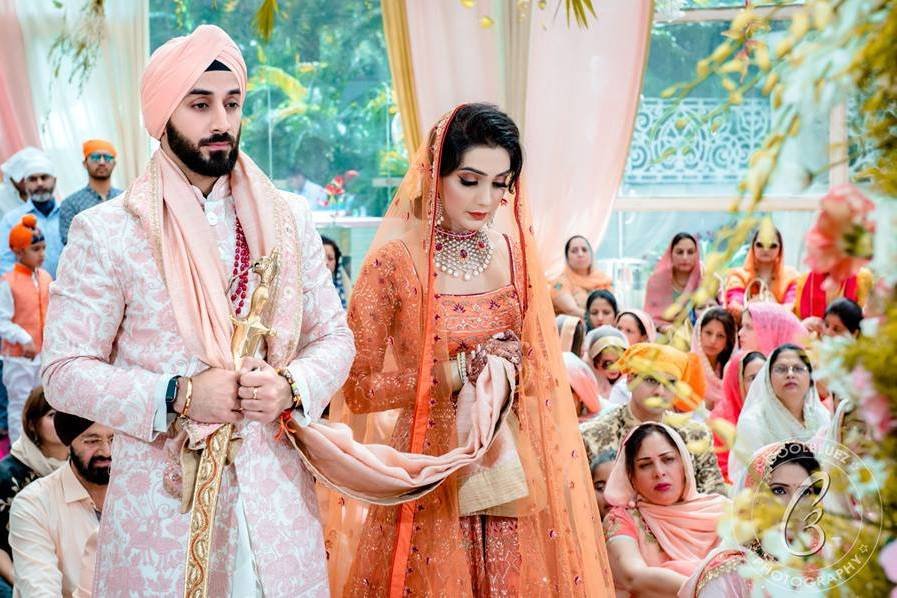The wedding dress, a symbol of love, commitment, and celebration, has evolved over centuries, reflecting cultural shifts, fashion trends, and individual tastes. This iconic garment is more than just fabric and embellishments; it encapsulates the dreams, aspirations, and personal style of brides around the world. In this article, we embark on a captivating journey through the history, trends, and significance of wedding dresses, exploring how they have become an integral part of the wedding ritual.
Historical Evolution:
- The history of wedding dresses is a tapestry woven with threads of tradition, symbolism, and social norms. In ancient times, weddings were often simple affairs, and brides wore dresses in various colors, not limited to white. It wasn’t until the 19th century that Queen Victoria’s choice of a white wedding gown for her marriage to Prince Albert set a new trend. White came to symbolize purity and innocence, and this tradition persists in many Western cultures today.
- As the decades unfolded, wedding dress styles reflected the prevailing fashion trends. The Roaring Twenties brought about flapper-style dresses with dropped waists and intricate beadwork, while the post-war era of the 1950s saw a return to more traditional, romantic designs with full skirts and lace details. The swinging ’60s and the free-spirited ’70s ushered in unconventional styles, challenging the notion of what a wedding dress should be.
Trends Through the Decades:
- The world of wedding fashion has witnessed a kaleidoscope of trends, with each decade leaving its mark on bridal couture. The ’80s were characterized by extravagant designs, voluminous sleeves, and dramatic silhouettes. In contrast, the minimalist and sleek styles of the ’90s reflected a shift towards simplicity. The 2000s brought a resurgence of vintage-inspired dresses, with lace and A-line skirts making a comeback.
- In recent years, the wedding dress landscape has become more diverse than ever. Non-traditional colors, such as blush, champagne, and even black, have gained popularity, allowing brides to express their individuality. Designers are experimenting with unconventional fabrics, intricate embroidery, and unique silhouettes, catering to the diverse preferences of modern brides. Additionally, sustainability has become a key focus, with eco-friendly fabrics and ethical production practices gaining prominence.
Cultural Influences:

- Wedding dresses are not confined to Western traditions; they vary significantly across cultures, showcasing the rich tapestry of global wedding rituals. In Indian weddings, for example, brides often opt for vibrant and heavily embellished sarees, or lehengas, reflecting the country’s rich cultural heritage. In China, red is the traditional color for wedding dresses, symbolizing luck and prosperity.
- In the Middle East, bridal gowns are characterized by opulent designs, intricate beadwork, and luxurious fabrics. Muslim brides may choose modest yet elegant dresses, incorporating cultural and religious considerations into their attire. Each culture brings its unique flair to the world of wedding fashion, contributing to the global diversity of bridal aesthetics.
The Influence of Celebrity Weddings:
- Celebrity weddings have an undeniable impact on wedding dress trends. When a high-profile personality ties the knot, the world eagerly awaits a glimpse of the bridal gown, often setting the stage for the next big trend. For example, the iconic dress worn by Kate Middleton for her wedding to Prince William sparked a resurgence of interest in lace sleeves and a more modest silhouette.
- Similarly, the weddings of Meghan Markle, Priyanka Chopra, and other celebrities have influenced the choices of brides worldwide. The accessibility of images through social media platforms further amplifies the influence of celebrity wedding dresses, shaping the aspirations of brides who wish to emulate the style of their favorite stars.
Personal Expression and Customization:
- In the midst of evolving traditions and global influences, contemporary brides are increasingly embracing the idea of personal expression through their wedding dresses. Many opt for custom-designed gowns that reflect their unique style, personality, and love story. From subtle nods to cultural heritage to bold statements of individuality, brides are finding creative ways to make their wedding attire a true reflection of who they are.
- Designers and bridal boutiques are responding to this demand for customization by offering made-to-order and bespoke options. Brides can collaborate with designers to choose fabrics, embellishments, and silhouettes, ensuring that their dress becomes a one-of-a-kind masterpiece. This shift towards personalization marks a departure from the one-size-fits-all mentality, allowing brides to truly shine on their special day.
Conclusion:
- The wedding dress, with its rich history, diverse cultural representations, and ever-evolving trends, continues to be a symbol of love, commitment, and personal expression. From the traditional white gown to the avant-garde designs of the present day,. Wedding dresses have transcended their utilitarian purpose to become an art form, encapsulating the dreams and aspirations of brides worldwide.
- As we navigate the intricate world of bridal fashion,. We witness the interplay of tradition, cultural influences, and the individuality of each bride. The wedding dress remains a canvas upon which stories are written, dreams are realized, and love is celebrated in all its splendor. In the grand tapestry of weddings,. The bridal gown stands as a testament to the enduring magic and beauty of the union between two souls. Making it a timeless and cherished element of the matrimonial journey.
Internal link: largeskin











